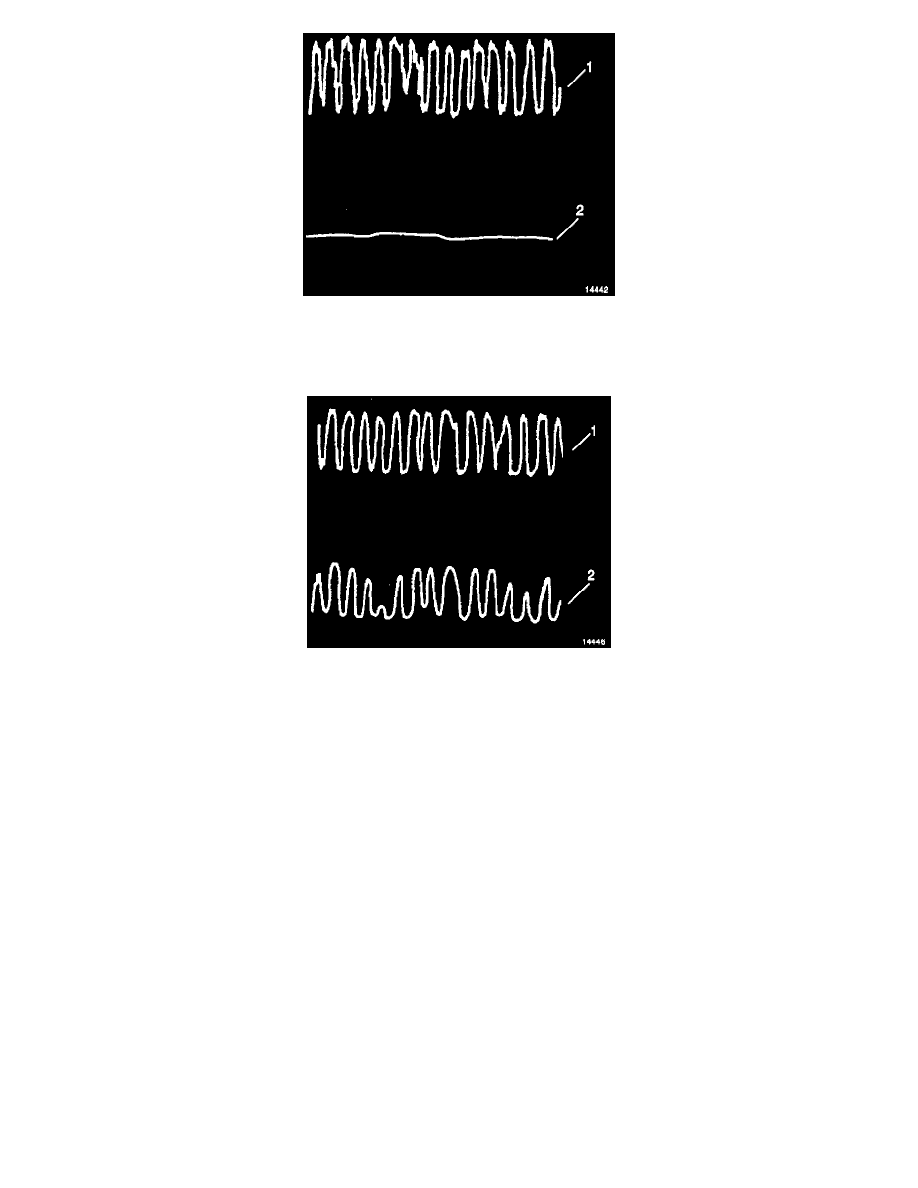Vibe FWD L4-2.4L (2009)

A good TWC catalyst will show a very active output voltage on the pre-catalyst heated oxygen sensor (1). A good catalyst, 95 percent hydrocarbon
conversion, will show a relatively flat output voltage on the post-catalyst heated oxygen sensor (2).
Catalyst Monitor (Bad Catalyst)
A degraded TWC catalyst, 65 percent hydrocarbon conversion, will show greatly increased activity in the output voltage from the post-catalyst heated
oxygen sensor (2). The degraded catalyst post-catalyst HO2S output voltage will therefore appear similar to the typically active output voltage of the
pre-catalyst heated oxygen sensor (1).
Misfire Monitor Diagnostic Operation
The misfire monitor diagnostic is based on crankshaft rotational velocity, reference period, variations. The powertrain control module determines the
crankshaft rotational velocity using the crankshaft position sensor and the camshaft position sensor. When a cylinder misfires the crankshaft actually
slows down momentarily. By monitoring the crankshaft and the camshaft position sensor signals, the control module can calculate when a misfire occurs.
For a non-catalyst damaging misfire, the diagnostic will be required to report a misfire that is present within 1000-3200 engine revolutions.
For a catalyst damaging misfire, the diagnostic will respond to a misfire that is within 200 engine revolutions.
Rough roads may cause a false misfire detection. A rough road will cause torque to be applied to the drive wheels and the drive train. This torque can
intermittently decrease the crankshaft rotational velocity and cause a false misfire detection.
On automatic transaxle equipped vehicles, the torque converter clutch (TCC) will be disabled whenever a misfire is detected. Disabling the TCC isolates
the engine from the rest of the drive line and minimizes the effect of the drive wheel inputs (torque) on the crankshaft rotation.
When the TCC has been disabled as a result of a misfire detection, the TCC will be re-enabled after approximately 3200 engine revolutions with no
misfire is detected. The TCC will remain disabled whenever a misfire is detected. This allows the misfire diagnostic to evaluate the system.
Fuel Trim System Monitor Diagnostic Operation
The fuel system monitor diagnostic averages of short-term and long-term fuel trim values. If these fuel trim values stay at the fuel trim limits for a
calibrated period of time, a malfunction is indicated. The fuel trim diagnostic compares the averages of the short-term fuel trim values and the long-term
fuel trim values to the rich and lean thresholds. If either value is within the thresholds, a pass is recorded. If both values are outside the acceptable
